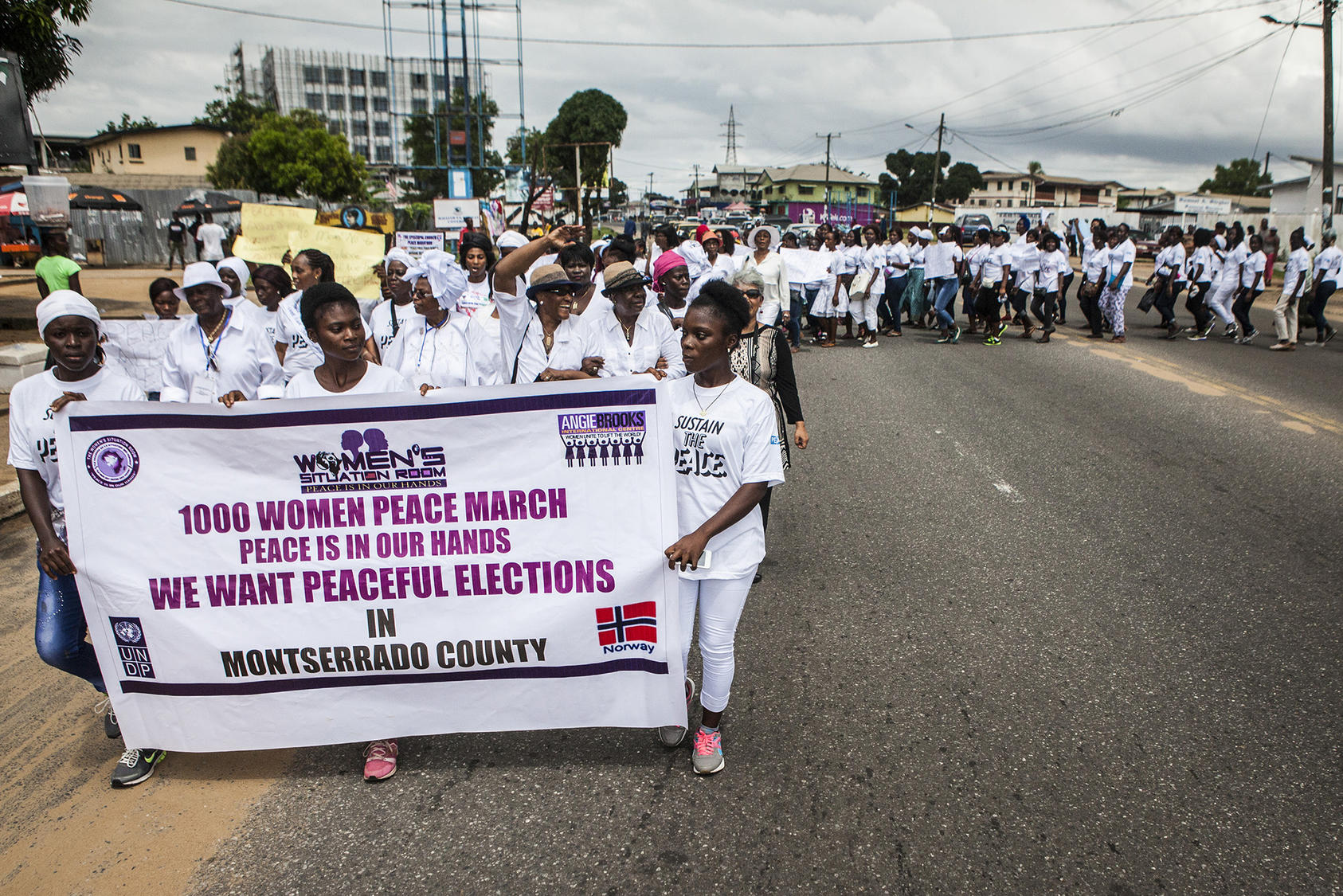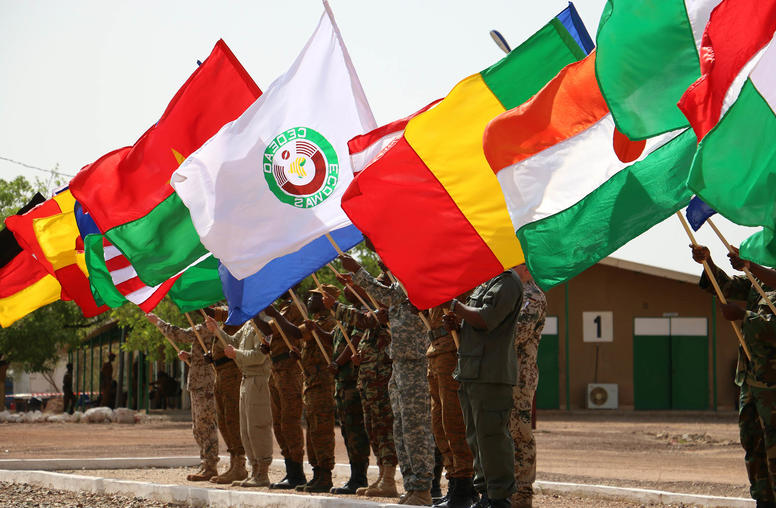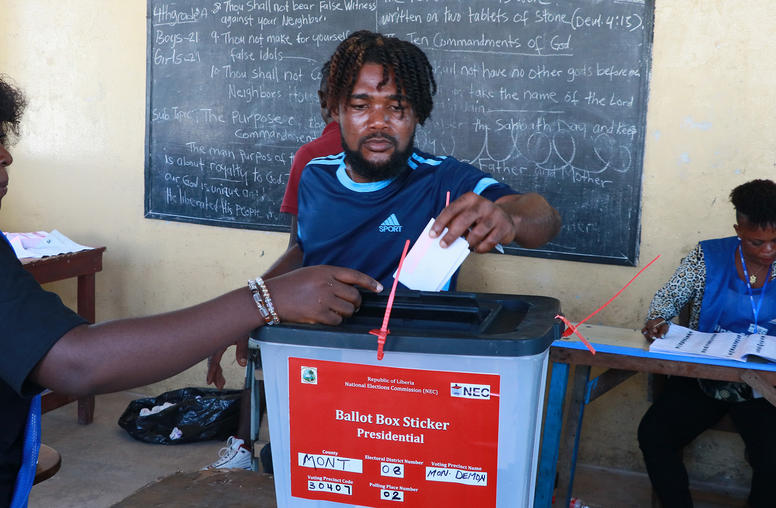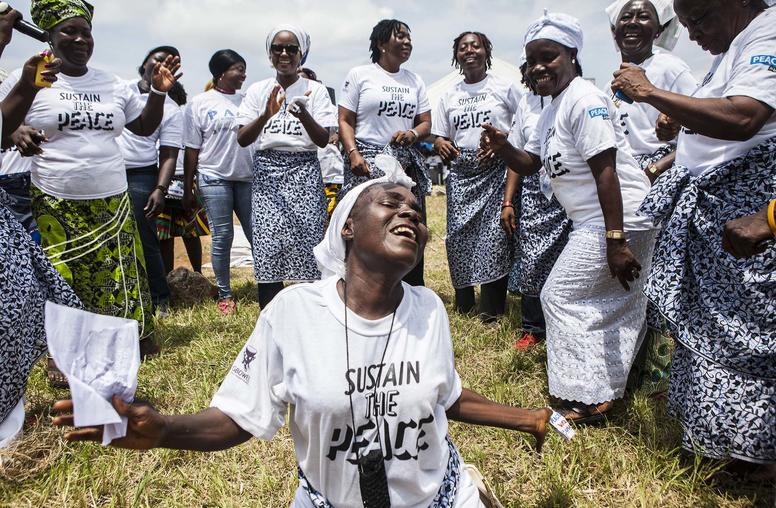When I served as an observer for Liberia’s 2017 elections, two features dominated the landscape: the shells of scorched buildings—scarred during Liberia’s civil wars (1989-1997, 1999-2003)—and election posters. The contrast between Liberia’s brutal past and uncertain future was on stark display. Many of those billboards were for various presidential candidates, but it was hard to escape the voter education posters imploring citizens to “say no to election violence.” Ahead of the vote, many worried that Liberia’s institutions lacked the capacity to ensure election security and integrity, leading to the potential of a return to the violence that plagued the country for decades.

Complicating matters, the UN Mission in Liberia (UNMIL)—which helped maintain security since the end of the second civil war in 2003—was preparing to withdrawal from the country. UNMIL not only provided security in postwar Liberia, but had also played a significant management role in the country’s past elections. International donors, however, coordinated with Liberia’s National Election Commission (NEC) to encourage citizens to abstain from violence. To the delight of Liberians and the international community, the election was remarkably peaceful, resulting in the first democratic transition of power since 1944.
Kenya also held elections in 2017, and the country’s election commission—similarly aided by international donors—deployed a peace messaging and voter education campaign. Violence has been a constant in Kenyan elections since it transitioned to a multiparty democracy in 1991. In the lead up to 2017 elections, there was intense concern over the potential of election violence.
Although there was no wide-scale violence like in the 2007 polls, the 2017 risk environment proved to be too ripe: There were over 100 reported deaths—including the grisly murder of the election commission’s IT manager Chris Msando days before the election—and many more injuries. A history of violence is often one of the leading indicators of future insecurity. So, why did Kenya’s elections turn violent while Liberia’s remained peaceful?
In a new USIP report, Jonas Claes and Inken Von Borzyskowski examine the efficacy of election-violence prevention methodologies, looking particularly at Kenya and Liberia. They found that peace messaging, voter consultation and youth programming had little or inconsistent impact at best, and that high-quality election administration and well-trained and equipped police are more effective in preventing election violence.
Citizen Trust in State Institutions is Crucial
In an interview at USIP, Oscar Bloh from Liberia and Joshua Changwony from Kenya—both served as domestic observers in their country’s respective elections—explained what worked in preventing election violence in Liberia, and why similar interventions failed in Kenya.
Bloh, who represents the Center for Democratic Governance, said that citizen trust in Liberian state institutions—namely, the security sector, the Supreme Court and the National Election Commission (NEC)—played a key role in the peaceful conduct of the vote. “The LNP [Liberian National Police] provided neutral leadership—a shift from the past,” said Bloh. And Liberia’s election commission, according to Claes and Von Borzyskowski, “is widely regarded as an impartial and credible institution.”
Many Liberians I spoke with about the electoral process lauded the NEC for its professionalism and responsiveness. In a country where over half the population is illiterate, radio is the dominant form of mass communication. On the NEC’s radio programs “Elections and You” and “Say Yes to Peace,” election commissioners answered voters’ questions and promoted a peaceful election. This type of voter education not only reinforced the importance of peaceful elections, but the credibility of the NEC, as its commissioners directly engaged with citizens.
Liberia’s Supreme Court also played a stabilizing role, overturning a NEC decision to exclude 22 candidates, which ensured a more inclusive election. “The courts pragmatic ruling ensured the inclusiveness of the election process and prevented tensions from escalating,” wrote Claes and Von Borzyskowski. The NEC also deftly handled a challenge to the first-round results from third-place candidate Charles Brumskine. “Citizens trust the judiciary,” said Bloh, and that trust helped mitigate rising tensions.
In Kenya, police responded to the tense election atmosphere with a heavy hand. When protesters took to the streets to reject the results from the first-round elections, “police responded with excessive force,” said Changwony, the deputy executive secretary of the Constitution and Reform Education Consortium (CRECO), adding “the image of the police was tainted” after its response.
Kenya’s election management body, the Independent Electoral and Boundaries Commission (IEBC), also proved to be a source of instability during the election. Changwony said that IEBC was simply not prepared to undertake such a complex election. Moreover, a slew of corruption scandals significantly damaged the public’s perception of the IEBC. As Claes and Von Borzyskowski note, “the IEBC was ‘under siege’ from numerous court cases, resulting in widespread distrust and confusion…”
After the IEBC declared incumbent Uhuru Kenyatta the winner, Kenya’s Supreme Court annulled the first-round vote and called for a rerun election. The ruling led many Kenyans to view the court as corrupt and politicized. A week before the rerun in October, IEBC Commissioner Roselyn Akombe issued a statement saying the second-round election would not be fair—immediately before making this statement she resigned from the commission and fled to the United States out of fear for her life. Akombe’s statement only further damaged the IEBC’s already tarnished image.
Citizen trust in state institutions to deliver a credible election, and that security agencies will be neutral in containing potential violence, proved pivotal in Liberia, while the deficit of trust in Kenya’s IEBC, police and Supreme Court further inflamed tensions.
What Does this Mean for International Election Assistance?
Voter education, peace messaging and youth engagement are pillars of the international community’s approach to election violence prevention. But, Claes and Von Borzyskowski found the impact of these approaches to be limited or ineffective at best, confirming previous USIP research. Other organizations, however, continue to utilize these methodologies and tout their effectiveness.
“The conflict management approach … in the west and east of Kenya differed. In the west the approach was about working with the policing sector, yet in the east it focused on community mediation panels … The approach in the east also saw a combination of peace messaging, youth engagement and voter education. Far less conflict erupted in the east than in the west,” said Rushdi Nackerdien, the regional director for Africa at the International Foundation for Electoral Systems (IFES), which implemented programming in both Liberia and Kenya in 2017.
Claes and Von Borzyskowski’s finding speak to the importance of a comprehensive approach to election violence prevention. Even if peace messaging efforts typically fail to reach their targeted audience, it doesn’t mean they should be discarded. But, this research tells international donors and election assistance providers that sound election administration and security sector engagement should be prioritized.
Perhaps most importantly, this research demonstrates that there is no effective one-size-fits-all approach to election violence prevention. Country context is critical and must be considered. Moreover, emphasizing that elections are not a one-off event, but a process allows for the proper preparation—a point that both Bloh and Changwony repeatedly emphasized.
When citizens believe that the state is delivering a credible, transparent and fair electoral process, they are more likely to follow the rules of the game and not resort to violence to resolve disputes. Building that trust, particularly in societies with a history of violence, is crucial to setting the stage for a peaceful election.
For more, see Claes and Von Borzyskowski’s Peaceworks, “What Works in Preventing Election Violence.”


